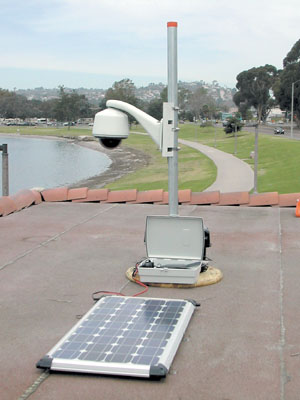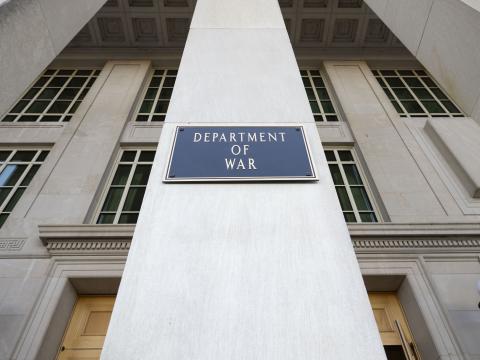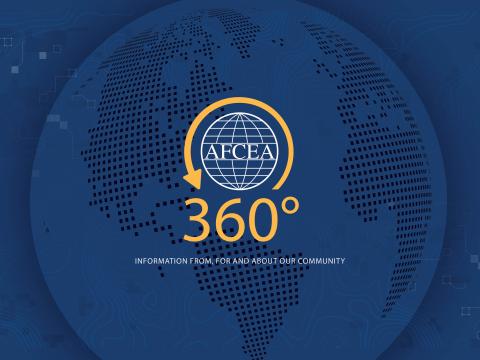Pace of Innovation Gathers Momentum
 |
CCAT funded this prototype of a wireless surveillance camera that is currently being used by the San Diego Police Department. Developed by VivaMicro, the technology provides analytical capabilities such as unusual activity detection or suspicious thermal imaging activity detection. |
Industry, academia and government organizations are collaborating to build a new information superhighway and put commercial homeland security technologies on the fast track. The goal is to accelerate processes and possibly circumvent some of the roadblocks; these roadblocks are slowing down the delivery of viable security solutions to the government agencies that need them. This approach aims at making innovative technologies commercially available two to three times faster than if they had gone the traditional U.S. Defense Department commercialization route.
Thousands of entrepreneurs have been developing products that meet today’s security demands, but many of these industry professionals have hit a wall when attempting to finesse their technologies through the bureaucratic maze of homeland security organizations. At the same time, government departments have been inundated with so many proposals that just sorting through them hinders progress. As a result, although technical solutions reside in the heads and hands of hundreds of entrepreneurs, the pace of getting technologies into the field remains slow.
The Center for Commercialization of Advanced Technology (CCAT), San Diego, is helping solve this problem by building a bridge between entrepreneurs and the government. The center is a consortium comprising San Diego State University, the University of California–San Diego Jacobs School, California State University’s Office of Technology Transfer and Commercialization, ORINCON Corporation International and the Space and Naval Warfare (SPAWAR) Systems Center in San Diego. SPAWAR links CCAT with Defense Department sources of advanced technology.
Among the 13 focus areas currently being pursued by CCAT are advanced communications systems; border, port and transportation security; information, electronics and surveillance; information network security; and weapons and aircraft technologies. The center is now assisting companies and researchers who are developing technologies such as real-time image enhancement, identity theft detection and prevention, wireless visual surveillance, manportable robotics, contaminant detectors, cross-language information extraction and intrusion detection.
Organization of the center began in the summer of 2001 with an initial mission of facilitating regional collaboration; however, the ultimate goal was to support national homeland security efforts. Congress appropriated two-year funding of $10.8 million for the center under the 2002 Defense Department budget. A third year of funding was approved in July 2003, bringing the total to more than $17 million.
Louis G. Kelly, chairman, CCAT, relates that the center originally focused on crisis management because it was of primary interest to SPAWAR. Kelly, who also is president and chief operating officer of ORINCON Technologies Incorporated, San Diego, explains that, after September 11, 2001, CCAT extended its reach into work with homeland security agencies and other federal organizations such as the Centers for Disease Control and Prevention. It also began investigating additional technology priorities of homeland security, such as border security, first responder needs, information network security, port security, bioterrorism defense and transportation security. Today, CCAT helps entrepreneurs and start-up companies move their products to the marketplace faster and works with government scientists and university professors who want to commercialize their technologies.
The center provides two types of assistance. Business services include support with items such as market analyses, intellectual property issues, business planning and venture capitalist funding. Financial assistance is the second category of support and includes funding directly from CCAT for prototype development and test and evaluation work.
Kelly says that addressing the current problem of getting commercial technologies into the public sector faster is the essence of CCAT’s mission. The goal of the program is to assess and commercialize a technology in one to two years. CCAT’s highly structured solicitation process is one way the center is making sure that the technology development it supports can move quickly to the marketplace. The center announces several solicitation periods throughout the year. Proposed technologies must fall into the specific areas that have been identified as of special interest to homeland security agencies and the Defense Department.
In addition to limiting proposals to certain types of technologies, the down select occurs early in the evaluation stage, which helps hasten the commercialization process. CCAT divides the solicitations into two categories: one for applicants under the industry-academic research institution area and one for government applicants. Awards under the first category are generally made 90 days after the solicitation period begins, while government awards are announced approximately 60 days after the solicitation opens.
Since July 2001, CCAT has issued 112 awards in excess of $8.2 million to 62 technology companies, university researchers and government laboratories, but competition is stiff. For example, between July 2001 and July 2003, CCAT conducted eight solicitations and evaluated nearly 400 proposals, which means only 15.5 percent of the applicants received awards.
“There are probably hundreds of thousands of leading-edge commercial start-up companies out there—some that opened after 9/11 and others that were developing homeland security before but turned their focus to homeland security after 9/11. Those companies would probably not be able to bring their technologies to government were it not for some kind of concerted effort, especially because they don’t have that kind of experience. In the government, it’s often very difficult to figure out who to contact, and there are many layers of difficulty,” he says.
One way companies can get their technologies into the commercial market and then noticed by federal, state and local agencies is through teaming, Kelly relates. Although small firms may produce a particular technology, governments are looking for solutions at the systems level, and joining forces can meet this requirement. CCAT works with companies to facilitate this partnering effort and spur the solutions to the government, he adds.
Technologies that will assist in border monitoring and control constitute one area that lends itself to team effort. This particular problem will not be solved with a single technology, but instead requires a set of capabilities, Kelly says. Incremental improvements will probably be seen in this area, and the firms CCAT is working with will have to fit into this approach by working with large contractors. The center facilitates this process by arranging introductions between small and large firms, he states.
CCAT also helps firms advance the development of their technologies. Although many entrepreneurs believe they have designed a total technology solution that addresses a certain problem, it may not yet be at the level at which the government can use it, Kelly says. Additionally, agencies want to be sure that the solution they are purchasing has been tested and operates as promised. Standardized testing provides this assurance, and CCAT assists companies with this process, he notes.
In some ways, CCAT mirrors the work being done by the Office of Naval Research’s Commercial Technology Transition Office, or CTTO (SIGNAL, December 2003, page 31). The CTTO currently is working with entrepreneurs and venture capitalists to propel technologies that meet naval requirements ahead in development. Kelly relates that his organization is working with the CTTO to examine solutions that would benefit the U.S. Navy. Ultimately, the only way the speed at which technologies move into the commercial sector will accelerate is through organizations such as CCAT and the CTTO that can broker deals, he says.
Based on his experience working with the government, Kelly says a number of factors have been slowing down agencies’ ability to purchase homeland security products that are already on the market. First, during the time the federal government and state and local governments were organizing homeland security teams, only limited purchases could be made. Second, many agencies continue to have to deal with legacy equipment, determine what new technologies are needed and figure out how to integrate the two. Finally, homeland security groups must devise a strategy for how to handle the particular threats they face. Once this strategy is outlined, small companies can examine the requirements to see how they fit in it, he advises.
Kelly admits that strictly off-the-shelf products cannot and will not meet all of the government’s requirements. The military and law enforcement, for example, may need ruggedized versions of items; however, commercial technologies can be used at the component level with minor modifications made to meet specific needs. Consequently, commercial technologies probably offer about an 80-percent solution, he says.
Although homeland security solutions are required in a multitude of areas, Kelly believes that a critical need exists for accelerated work on technologies that would address particular threats. His top priority is biological and chemical agent detection capabilities. “There has been a lot of research, but we are much more at risk in this area than in any other area,” he says. Although the threat may not be as imminent as others, the consequences of a biological or chemical attack could be devastating. While security has been heightened at airports, far less is being done in the biological and chemical threat domain, and the government must determine how to deploy low-cost detection devices, he maintains.
Equally important, Kelly says, is improving the detection of explosives, and this problem must be solved in many areas, including monitoring capabilities for aircraft, trucks, containers and people.
Kelly contends that technologies that facilitate collaboration and information sharing also should be a priority. The key here will be to provide the capability to exchange just the right amount of information in real time at the right levels. Merely being able to share all available data is not enough, he notes.
The federal government is making progress in the area of homeland security, but Kelly emphasizes that much of the responsibility for protection and crisis management resides in regional governments. Issues about staffing, assets and budgeting at the local level still need to be resolved. “There is huge budget pressure at the regional level that is not being talked about. It is taking a long time to get funds from the federal level to regions,” he says.
Additional information on the Center for Commercialization of Advanced Technology is available on the World Wide Web at http://www.ccatsandiego.org.




Comments